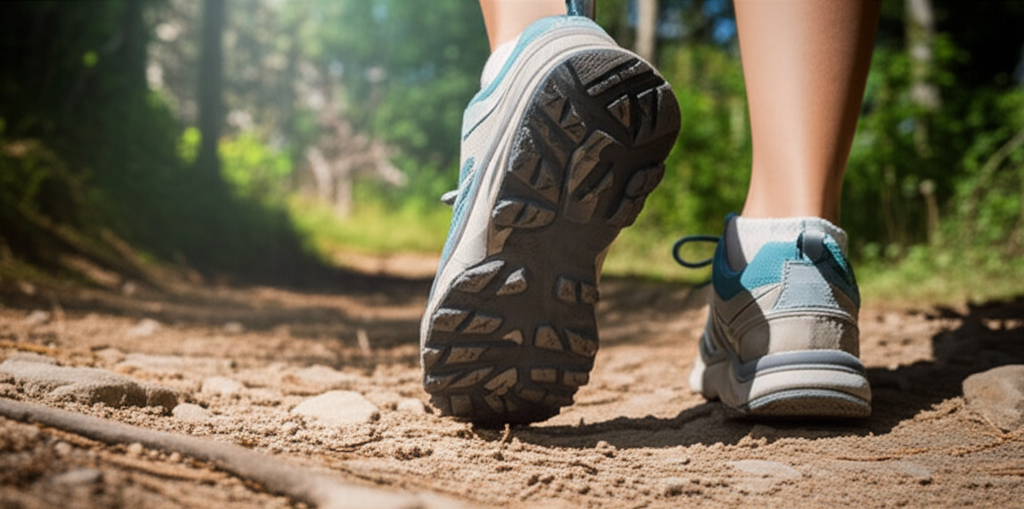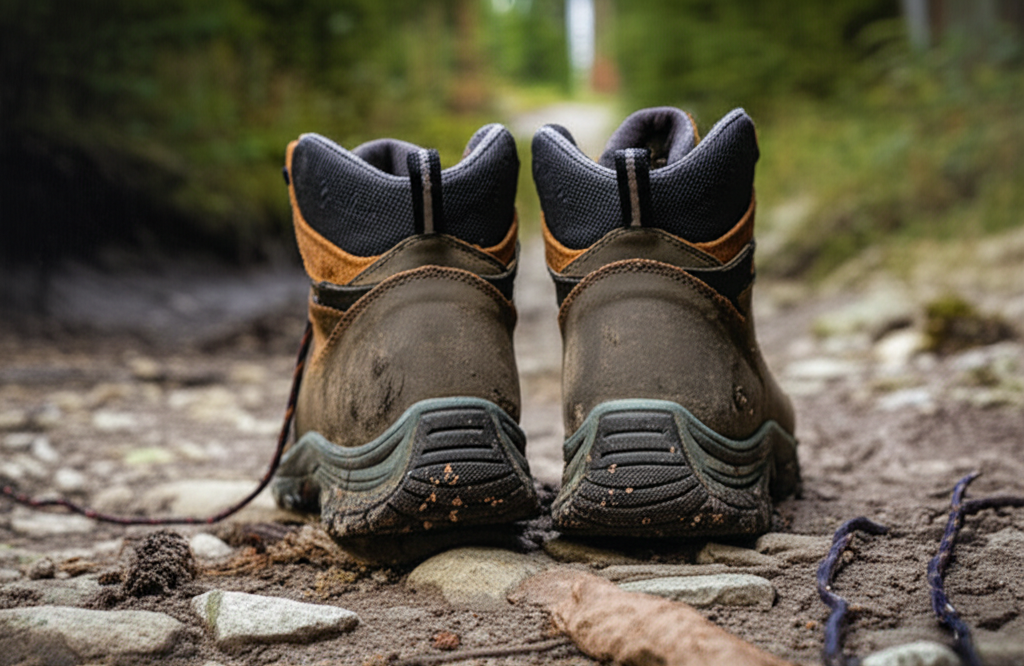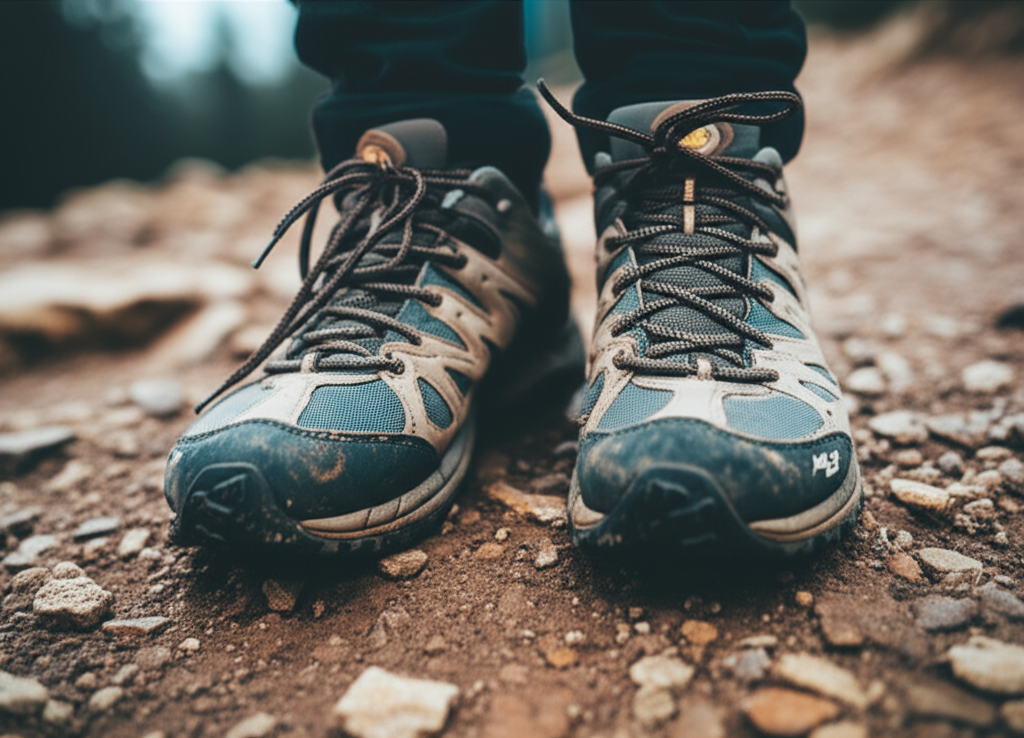While walking shoes can offer comfort for casual strolls, they are generally NOT good for hiking. Hiking demands specialized features like superior grip, ankle support, and durable construction to handle varied terrains and protect your feet, which typical walking shoes lack.
Key Takeaways
- Understand the critical differences between walking and hiking footwear.
- Prioritize ankle support and sturdy outsoles for hiking safety.
- Recognize the limitations of walking shoes on uneven trails.
- Invest in proper hiking boots for a better and safer experience.
- Consider trail type and intensity when choosing hiking shoes.
Are Walking Shoes Good For Hiking? The Shocking Truth Revealed
It’s a question many of us have asked when looking at our shoe collection: can my trusty walking shoes double up for that upcoming hike? You love how comfortable they are for errands and city strolls. The idea of saving money and buying fewer shoes is appealing. However, when it comes to hitting the trails, the answer might surprise you. This article will break down exactly why your everyday walking shoes might not be the best choice for your hiking adventures, and what you should look for instead.
We’ll guide you through the essential differences between walking shoes and hiking footwear, helping you make an informed decision to keep your feet happy and safe on any trail. Let’s discover what makes a shoe truly trail-ready.
Understanding the Core Differences: Walking Shoes vs. Hiking Shoes

The world of footwear is vast, and it’s easy to get confused between shoes designed for different activities. Walking shoes and hiking shoes, while both focused on foot comfort, serve very distinct purposes. Think of it like using a screwdriver for a hammer – they both have a handle and a metal part, but their functions are completely different. Your everyday walking shoes are engineered for smooth, predictable surfaces and repetitive motion. Hiking shoes, on the other hand, are built to tackle the unpredictable challenges of nature.
The primary goal of a walking shoe is to provide cushioning and support for the consistent stride of walking on sidewalks, pavement, or treadmills. They offer flexibility and breathability, making them excellent for daily wear. However, these very features can become liabilities when you step off the beaten path and onto uneven, rugged terrain.
Hiking, by its nature, involves navigating diverse landscapes. This can include rocky paths, slippery inclines, loose gravel, muddy sections, and uneven ground. These conditions demand more from your footwear than a gentle walk in the park. Without the right support and protection, you risk discomfort, injury, and a significantly less enjoyable experience.
Why Walking Shoes Fall Short on the Trail
When you’re hiking, your feet encounter forces and challenges that are simply not present during a typical walk. This is where the “shocking truth” about walking shoes for hiking really comes to light.
Lack of Adequate Ankle Support
One of the most significant drawbacks of most walking shoes is their low-cut design. This offers little to no support for your ankles. On uneven terrain, you’re much more likely to twist an ankle, leading to sprains or even more serious injuries. Hiking boots, especially mid-cut or high-cut varieties, are specifically designed to cup and stabilize your ankle, providing crucial support and reducing the risk of these common hiking injuries. According to the National Park Service, proper footwear is essential for preventing injuries on trails.
Insufficient Traction and Grip
The outsoles of walking shoes are typically designed for smooth surfaces. They often have shallower treads made from softer rubber compounds. This means they can easily slip on wet rocks, muddy slopes, or loose gravel. Hiking shoes and boots feature aggressive, deep tread patterns made from harder, more durable rubber compounds. This provides superior grip and traction, allowing you to confidently navigate slippery or steep sections of a trail. Imagine trying to climb a wet rock face in smooth-soled sneakers – it wouldn’t end well!
Limited Protection from Trail Hazards
Hiking trails are rife with potential hazards for your feet. Think sharp rocks, exposed roots, and falling debris. Walking shoes often have soft uppers and minimal reinforcement, leaving your feet vulnerable to bumps, bruises, and even puncture wounds. Hiking footwear, particularly hiking boots, incorporates reinforced toe caps, sturdy sidewalls, and sometimes even rock plates in the sole to protect your feet from impact. This added protection is vital for maintaining comfort and preventing injury on rugged trails.
Inadequate Cushioning and Support for Varied Terrain
While walking shoes provide cushioning for repetitive impact on flat surfaces, they may not offer the right kind of support for the varied forces encountered during hiking. Hiking can involve steep ascents and descents, which put different types of stress on your feet and ankles. Hiking-specific shoes often have stiffer midsoles and varying levels of arch support tailored to these demands, helping to prevent fatigue and discomfort over longer distances and more challenging terrain.
Durability and Water Resistance Issues
Walking shoes are generally not built to withstand the harsh conditions of a hike. Repeated exposure to dirt, mud, water, and abrasive trail surfaces can quickly wear them out. Many walking shoes are made with mesh uppers that are not water-resistant, leading to wet, uncomfortable feet if you encounter puddles or rain. Hiking footwear is constructed with more durable materials, often incorporating water-resistant or waterproof membranes like Gore-Tex, to keep your feet dry and protected.
When Might Walking Shoes Be Okay for a “Hike”?

It’s not always black and white. There are certain very specific scenarios where using walking shoes for a trail might be considered, though still not ideal. These are more akin to “nature walks” than true hikes.
- Paved or Well-Maintained Paths: If your “hike” is on a completely paved, smooth, and level path, like a park loop or a nature trail that’s essentially a sidewalk, your walking shoes might suffice.
- Extremely Short, Flat, and Easy Trails: For a very brief, flat, and non-technical walk in a very controlled environment (e.g., a short, flat loop in a local park with no rocks or roots), they might get you through without immediate incident.
- As a Temporary Measure (with caution): If you’re caught in a pinch and absolutely must do a very mild, short walk on a trail, and have no other option, wearing your most supportive walking shoes might be a last resort. However, this should be avoided if at all possible.
Even in these limited cases, you’ll still be missing out on the superior grip and protection that hiking footwear offers, making the experience less safe and enjoyable.
The Anatomy of a Proper Hiking Shoe/Boot
To truly appreciate why walking shoes aren’t ideal, let’s look at what makes a dedicated hiking shoe or boot so effective.
Outsole: The Foundation of Grip
The outsole is the part of the shoe that touches the ground. Hiking outsoles are characterized by deep, multi-directional lugs (the bumps and grooves) made from sticky, durable rubber compounds. These lugs dig into soft ground for traction and provide stability on hard surfaces. Brands like Vibram are renowned for their high-performance hiking outsoles.
Midsole: Cushioning and Support
The midsole sits between the outsole and the insole (where your foot rests). It’s responsible for shock absorption and providing stability. Hiking shoe midsoles are typically firmer than those in walking shoes, offering better support on uneven ground and preventing your foot from feeling every rock and root. Materials like EVA (ethylene-vinyl acetate) and polyurethane are common.
Upper: Protection and Stability
The upper is the part of the shoe that encloses your foot. Hiking uppers are made from durable materials like leather, synthetic leather, or robust textiles. They often feature reinforced toe caps and heel counters for added protection. The cut of the upper also matters:
- Low-cut: Similar to walking shoes, offering maximum flexibility but minimal ankle support. Best for light trails and fast-paced hiking.
- Mid-cut: Covers the ankle bone, offering a good balance of support and flexibility. A popular choice for most hikers.
- High-cut: Extends above the ankle, providing maximum ankle support and protection. Ideal for rough terrain, heavy loads, and off-trail adventures.
Waterproofing and Breathability
Many hiking shoes and boots incorporate waterproof-yet-breathable membranes (like Gore-Tex) to keep water out while allowing sweat vapor to escape. This is crucial for comfort on multi-day hikes or in unpredictable weather.
Choosing the Right Hiking Footwear: A Beginner’s Guide

Now that you understand the differences, how do you pick the right hiking shoe for your needs? It depends on the type of hiking you plan to do.
Types of Hiking Footwear
Here’s a breakdown of the main categories:
| Footwear Type | Best For | Pros | Cons |
|---|---|---|---|
| Hiking Shoes | Day hikes, well-maintained trails, fastpacking | Lightweight, flexible, breathable, good traction | Less ankle support, less durable for rugged terrain |
| Day Hiking Boots | Most day hikes, moderate trails, some backpacking | Good ankle support, durable, comfortable cushioning | Heavier than shoes, can be less flexible |
| Backpacking Boots | Multi-day treks, rough terrain, carrying heavy loads | Excellent ankle support, maximum durability, robust protection | Heavy, stiff, longer break-in period |
| Trail Runners | Fast hikes, very well-maintained trails, experienced hikers | Extremely lightweight, flexible, breathable, good grip | Minimal support and protection, wear out quickly on rough trails |
Consider Your Hiking Style
- Trail Type: Are you sticking to groomed paths or venturing into rocky, root-filled wilderness?
- Pack Weight: Will you be carrying a light daypack or a heavy multi-day pack?
- Trip Duration: Are you going for a few hours or several days?
- Weather Conditions: Will you be hiking in wet or dry conditions?
For beginners, a good pair of mid-cut day hiking boots often provides the best balance of support, comfort, and versatility.
Pro Tips for Buying Hiking Shoes
Pro Tip: Always try on hiking shoes or boots at the end of the day when your feet are slightly swollen. Wear the type of socks you plan to hike in. Ensure there’s about a finger’s width of space between your longest toe and the front of the shoe when standing. Walk around the store, paying attention to any pinching or rubbing.
Common Mistakes Beginners Make with Footwear
It’s easy to stumble when you’re new to an activity. Here are some common footwear pitfalls to avoid:
- Assuming “sneakers” are interchangeable: Thinking that any athletic shoe will do for hiking.
- Not trying them on properly: Buying online without trying or wearing the wrong socks.
- Ignoring ankle support: Opting for low-cut shoes when more support is needed.
- Underestimating the terrain: Not matching footwear to the difficulty of the trails.
- Not breaking them in: Wearing brand-new boots on a long hike.
Frequently Asked Questions About Walking Shoes and Hiking
Q1: Can I wear my running shoes for hiking?
Running shoes are designed for forward motion on relatively predictable surfaces. They offer good cushioning but typically lack the lateral stability, ankle support, and aggressive traction needed for hiking on uneven terrain. You’re more prone to slips and ankle rolls.
Q2: How important is ankle support in hiking boots?
Ankle support is crucial, especially for beginners and on challenging trails. Mid-cut and high-cut boots help prevent ankle twists and sprains by stabilizing the joint, giving you more confidence and safety on uneven ground.
Q3: Do I need waterproof hiking boots?
Waterproof boots are highly recommended if you hike in wet conditions, through streams, or in areas prone to rain or dew. They keep your feet dry, preventing blisters and discomfort. However, they can be less breathable in very hot, dry climates.
Q4: How long should hiking boots last?
The lifespan of hiking boots varies greatly depending on the quality, materials, and how often and intensely they are used. A well-maintained pair of quality hiking boots can last anywhere from 500 to 1,000 miles, or several years of moderate use.
Q5: What’s the difference between hiking shoes and trail running shoes?
Hiking shoes are generally more durable and offer more support and protection than trail running shoes. Trail runners are lighter and more flexible, designed for speed on less technical terrain. Hiking shoes typically have stiffer soles and more robust uppers for tackling rugged trails.
Q6: Can I wear my walking shoes for a very short, easy nature walk?
For a short, paved, or extremely flat and smooth nature walk, your walking shoes might be acceptable. However, even on easy trails, they lack the grip and protection of dedicated hiking footwear, so caution is still advised.
Conclusion: Invest in Your Adventure
While the thought of using your comfortable walking shoes for a hike might seem practical, the “shocking truth” is that they are generally not suitable for the demands of the trail. The lack of ankle support, insufficient traction, and limited protection can turn a fun outing into a painful or even dangerous experience. Investing in a proper pair of hiking shoes or boots is an investment in your safety, comfort, and overall enjoyment of the outdoors. By understanding the key differences and choosing footwear designed for the specific challenges of hiking, you’ll be well on your way to exploring new trails with confidence and happy feet.

